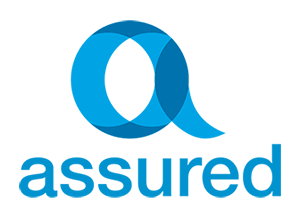If you’re ready to apply for a home loan, chances are you’ve already considered whether your existing local bank will be the right lender to provide your mortgage. However, if you’re with a smaller bank it might be tempting to look towards some of the larger financial institutions instead.
Choosing the right home loan to suit your personal situation and your future financial goals is an important decision. Making such a decision on your own can sometimes be overwhelming, especially since there are so many different lenders out there offering various product features, additions and extras on their home loans.
Many people automatically assume that Australia’s Big Four banks will somehow be safer than aiming at a small bank, non-bank, building society or credit union. The assumption with many borrowers is that bigger banks should be too big to fail, while smaller lenders might carry a risk of going under – and taking your mortgage with them.
In reality, there are some definite pros and cons to opting for the Big Four banks, but there are also some major advantages of considering what smaller lenders have to offer.
Is bigger really better?
Statistics show that the Big Four banks provide the majority of home loans in Australia. Yet surveys conducted by Roy Morgan Research show that consumers consistently receive better customer service from smaller lenders than from the big banks.
Smaller lenders are restricted by operating with smaller marketing budgets as compared to the big banks. Those small lenders are forced to find alternative ways to appeal to new customers, which incidentally often helps improve customer retention rates.
In most cases, smaller lenders offer a more personalised customer experience as compared to big banks, who tend to focus much of their efforts predominantly on high net worth customers or business banking customers.
Home loan competitive interest rates
The big banks know their existing customers are likely to apply for a home loan at their local branch rather than shop around. They also know they need to generate sufficient profits to appease shareholders. Those things, plus a combination of other factors, often mean the interest rates offered by the Big Four banks aren’t always as competitive as they could be.
By comparison, smaller lenders often have lower overheads and operating costs, which allow them to offer customers more competitive interest rates. According to Canstar’s online comparison of home loan interest rates, smaller lenders consistently offer lower rates than the Big Four banks.

Approval times
Big banks have the backing of significant back-office resources, strong process-driven procedural operations and entire teams of people dedicated to assessing and approving home loan applications quickly.
However, smaller lenders often don’t have the same levels of staff or resources, which can sometimes mean the loan approval process can feel slow and drawn-out.
Branch networks
One of the primary reasons many people choose to stick with the Big Four banks is convenience of local branch networks. Having a physical bricks-and-mortar branch nearby gives some customers a sense of tangibility. They have the option of walking into the branch and speaking with a customer service representative or handing cash directly to a cashier.
Yet statistics show that the number of people taking advantage of the convenience of online banking services and electronic payment options is increasing each year. There are now fewer people walking into physical bank branches than ever before, resulting in many banks closing under-utilised branches right across the country.
Home loan repayments can be automatically debited from any transaction account on the specified date. Additional payments can be made electronically at any time using online banking facilities.
If choosing a bank comes down to having a branch nearby, ask yourself how often you really use the facility.
Flexibility
The Big Four banks are shrouded by layers of regulation and management hierarchy, which often means they are often less flexible than their smaller counterparts. By comparison, smaller lenders can often provide plenty of flexibility with lending policies, negotiating on interest rates and fees, and adding extra features to home loans and other banking products.
Which is best?
There is no right or wrong answer when it comes to deciding between smaller lenders or big banks. As there are definite pros and cons to each option, the decision should come down to what works best for your personal financial situation and your priorities.
If in doubt, give Assured Home Loans a call on (08) 8360 0200 and an experienced consultant can work with you to assess the best option for your personal circumstances.
This article provides general information which is current as at the time of production. The information contained in this communication does not constitute advice and should not be relied upon as such as it does not take into account your personal circumstances or needs. Professional advice should be sought prior to any action being taken in reliance on any of the information.



